Iraqi Food Dishes: Basic Overview
Common Ingredients
Common Cooking Methods
Courses
Meals
Key Taste
Eating Etiquette
Meal Presentation
Culinary Festivals
Influence and Fusion
Popular Types of Iraqi Dishes
-
Cakes and Pastries
In Iraqi cuisine, this category typically includes sweet, baked or fried items often made with flour, nuts, and dates, featuring rich, aromatic flavors.
-
Rice Dishes
Central to Iraqi meals, these dishes often combine rice with meats, vegetables, and a variety of spices, showcasing the blend of flavors and textures characteristic of Middle Eastern cooking.
-
Stews
Iraqi stews are hearty, slow-cooked dishes that usually feature a combination of meat (like lamb or beef), vegetables, and a rich, spiced broth.
-
Desserts
In Iraq, desserts are often sweet, rich, and flavored with ingredients like dates, nuts, and honey.
-
Fried Dishes
Iraqi fried dishes are typically savory, providing a crunchy texture when paired with other dishes.
Traditional Iraqi dishes are specialties that have been prepared and enjoyed for many generations by the people of Iraq, a country in the Middle East and West Asia.
Iraq has a rich history and covers ancient Mesopotamia, one of the cradles of human civilizations, which gives depth to its foods.
The culinary traditions of Persia and neighboring Arab countries leave an indelible mark on local foods. Another essential contributor is the cuisine of the Ottoman Empire that once ruled Iraq and the Arab world.
Baghdad, Iraq’s capital city, is a renowned culinary center. The fame of Baghdad and Iraqi cuisine peaked during the Islamic Golden Age between the 8th and 13th centuries.
The cuisine of Iraq varies by region, with distinct flavors and dishes in the northern, middle (around Baghdad), and southern parts of the country. But these regions still share many common traits, like the preferences for meat (especially lamb), bread (locally known as khubz), rice dishes, and spices.
A cornerstone of local cuisine is mezza (or meze), a group of small plates that are enjoyed either as a full meal or as appetizers at the start of one. Subsequently, I will introduce you to Iraq’s broader food culture.
Here are the best 20 Iraqi dishes:
20 Popular Iraqi Dishes with Filters
Let me give you an extra helping hand through the filter system, allowing more options to check out these specialties of Iraq in alphabetical order, tastes, ingredients, dish types, cooking methods, and worldwide popularity.
Additionally, you shouldn’t overlook the culinary styles of Iraq that feature the most popular, national, traditional, street food, and fusion options:
Masgouf
- National
Masgouf is a grilled fish dish popular in Iraq and is always considered the country’s national dish. Locals prepare it from carp living in the Tigris River, especially the part that flows through Baghdad.
The waterfront Abu Nawas district is particularly famous for the dish. To prepare masgouf, the carp is split lengthwise down the back before being seasoned with spices like tamarind, turmeric, salt, and olive oil.
Then, the cook bakes the fish on a specifically designed iron clamshell grill over a big fire until the flesh becomes soft and succulent. Iraqis typically serve the grilled fish with crispy flatbread, onions, lime garnish, and pickles.
Quzi
- National
Quzi, alternatively spelled as qoozi or ghoozi, is a national dish of Iraq. Locals traditionally prepare it by stuffing a whole lamb with nuts, raisins, rice, and various spices, then slowly roasting the lamb in a closed oven or pit.
A common method is to roast lamb legs or lamb shoulders separately, cook the rice in lamb broth, and serve the lamb on the rice with nut garnish. The lamb is then cut into small pieces and served on the rice.
Kebab
- Street Food
Kebab is a traditional dish and street food in Iraq that is a grilled and skewered meat dish. Marinated lamb is the preferred ingredient for Iraqi kebabs.
The most well-known kebab variant is shish kebab. Tikka kebab (skewered and grilled chunks of lamb) is also a favorite.
Interestingly, locals in Iraq often use ground lamb mixed with spices. To bring out the tempting aromas of juicy kebabs, spices like paprika, sumac, and cumin are essential.
The grilled meat on skewers goes well with flatbread, pickles, and hummus (Middle Eastern chickpea-based dip).
Dolma
- Traditional
Dolma, or stuffed vegetables, is one of the most common Iraqi foods utilizing many types of vegetables, such as eggplants, onions, bell peppers, tomatoes, or zucchini.
The stuffed vegetables are then boiled at low heat with chicken or beef ribs in a tomato-based broth. In Northern Iraq, people usually add pomegranate juice to the filling of the stuffed vegetables for a sweet and tangy flavor.
Unlike people in countries where dolma is also popular, Iraqi locals don’t serve stuffed vegetables with yogurt. Sarma is a must-try variant of dolma made by wrapping grape leaves or leafy vegetables around the savory filling.
Kubba
- Street Food
Kubba, also called kibbeh, is an Iraqi dish with some similarities to meat dumplings or croquettes. It is usually served at mezza in the country and many other West Asian nations, such as Syria and Lebanon.
The croquette-like dish is prepared by pounding ground meat, bulgur (parboiled, cracked wheat), and spices into a fine paste. The smooth mixture is then shaped into small oval-sized patties and cooked in many ways, like grilling, deep-frying, or even serving raw.
Iraq has several notable kubba versions found nowhere else. Kubba Halab boasts a rice crust, while kubba Mosul is as flat and round as a disc. Kubba shorba is a tomato-based soup with meat patties.
Samoon
- Traditional
Samoon is a type of bread in Iraqi cuisine, famous for its unique diamond shape. An immensely popular type of bread in the country and its neighbors, samoon is made from yeast-leavened dough and baked in traditional stone ovens.
The versatile Iraqi yeast bread is excellent at pairing with Iraqi dishes, from dips to stews and grilled meat. A classic condiment to pair with samoon is the chutney-like amba, featuring pickled mangoes as the main ingredient.
Kleicha
- Traditional
Kleicha, or kolucheh, is a type of Iraqi cookie that looks like a slice of Swiss roll. Each cookie is filled with a sweet paste, ideally date paste, though nuts, sesame seeds, and desiccated coconut are also popular options.
The cookie is available in many shapes, from rounds to half-moons. Locals usually serve the cookies at special occasions like weddings and Eid al-Fitr.
Biryani
- Fusion
Biryani is a classic Iraqi rice dish consisting of spiced chicken, almonds, raisins, and seasoned potatoes served over a bed of chicken broth-cooked rice. The rice is usually prepared with saffron or turmeric to acquire a beautiful yellow color.
The rice dish is well-known in Iraq, especially in the Kurdistan region. Locals sometimes serve the mixed rice dish with a sour and spicy tomato sauce.
Mujaddara
- Traditional
Mujadara is a simple Iraqi dish combining cooked lentils, rice or bulgur, and sautéed onions, with spices like mint, cumin, or coriander for extra flavors.
The easy lentil and rice dish, first mentioned in a 13th-century Baghdad cookbook, is best savored with salads, bread, or yogurt on the side in Iraq.
Maqluba
- Traditional
Maqluba, literally “upside-down,” is a common Iraqi rice-based dish made with chicken or lamb and fried vegetables, such as eggplants, potatoes, tomatoes, and cauliflower.
The ingredients are meticulously layered in the pot before cooking, with vegetables at the bottom and rice at the top. When serving, the content is flipped upside down so that the tender veggies will sit on top of the fragrant rice.
The upside-down rice dish is often topped with chopped parsley and nuts. Simple salads or chopped vegetables are ideal sides for maqluba.
Mutabbaq Samak
- Traditional
Mutabbaq samak is a rice dish and comfort food in Iraq, especially in the southern region. Some people even consider it among the national dishes of Iraq.
Mutabbaq samak consists of marinated and fried fish, caramelized onions, and rice cooked in fish stock. Bony fish caught from local rivers are preferred.
Raisins, nuts, or chopped parsley as garnish and salads on the side are other necessary elements to complete the rice and fried fish dish.
Tepsi Baytinijan
- Traditional
Tepsi baytinijan is a casserole dish in Iraqi cuisine. Its main ingredients include fried eggplant, sliced vegetables (like tomatoes, onions, potatoes, etc.), fried meatballs, tomato paste, and spices.
The meatballs and tomato slices are usually arranged on top of other ingredients. After being baked in the oven, the aromatic eggplant casserole is now ready to be enjoyed with steamed rice, ideally basmati rice.
Bamia
- Traditional
Bamia is a traditional Iraqi stew made from lamb and okra in a tomato-based broth and served with bread or rice. The name was derived from bamya, the Arabic word for okra.
Some people in Iraq refer to the okra-based stew as margat bamya. Bone-in lamb shanks are a favorite cut.
Outside Iraq, the lamb and okra stew is also a common meal in many West Asian, Mediterranean, African, and Balkan countries.
Makhlama
- Traditional
Makhlama is a timeless Iraqi breakfast, prepared by sautéing ground beef with tomatoes or tomato sauce, onions, parsley, and spices before a few eggs are included at the top of the mixture.
A small garnish of chopped parsley, sumac, or cumin will provide a nice finishing touch to makhlama.
Tashreeb
- Traditional
Tashreeb, also known as tharid or taghreeb, is an age-old Iraqi stew allegedly dating back to the period of the Islamic prophet Muhamad. The dish is prepared from protein (like chicken, lamb, or chickpeas) and vegetables of onions, carrots, tomatoes, and eggplants.
When the stew is ready, it is poured over crumbled pieces of flatbread on the plate. Historically, poor people served tashreeb with stale old bread, but that isn’t necessarily the case these days.
Harees
- Traditional
Harees, also known as harisa or jareesh, is a traditional Iraqi dish made by cooking bulgur (or barley) and meat to a smooth consistency. In the past, wealthy families usually prepared the porridge for less fortunate neighbors during multi-day weddings, Ramadan, or Eid al-Fitr.
Nowadays, the bulgur porridge is a healthy dish widely enjoyed for any meal of the day. To improve the flavor, sugar, cinnamon, or butter is sometimes added to the porridge, which is also popular in many Arab and African countries.
Kanafeh
- Street Food
Kanafeh, also known as knafeh, is an age-old Iraqi dessert made from kataifi (spun pastry). This pastry is created by pan-frying a batter of flour and cornstarch, and then shredding it into thin strands.
The spun pastry is used to create the crust of kanafeh, while sweet soft cheese or cream is the main ingredient of the filling. When the cheese-filled pastry is just done baking and still hot, it is covered with sugar syrup and rose syrup before being garnished with crushed pistachios.
While kanafeh is popular year-round, it is most readily available during Ramadan alongside coffee or tea.
Qatayef
- Street Food
Qatayef is a traditional sweet dumpling traditionally served as a Ramadan dessert in Iraq. Dating back to the age of the Abbasid Caliphate, the dumpling dessert is made by stuffing a dumpling or folded pancake with sweet cheese or a blend of nuts (like almonds and hazelnuts).
After being deep-fried or baked, the dumplings will make a terrific dessert with a dash of honey or hot sugar syrup.
Qeema
- Traditional
Qeema is a classic Iraqi stew made with finely diced meat (like beef or mutton), crushed split peas, tomatoes, onions, and spices. The meat and split pea stew hails from Iran, where it is called gheimeh or qeimeh.
Iraqis usually serve qeema at communal meals during Ashura, a holiday commemorating the death of Husayn ibn Ali, Muhamad’s grandson and the third Shia imam.
Sfiha
- Street Food
Sfiha, or sfeeha is an Iraqi dish with some similarities to pizzas, consisting of a flatbread, ideally samoon bread, topped with a mixture of minced and seasoned lamb, tomatoes, onions, pine nuts, and spices.
Some sfiha versions replace lamb with beef and goat meat or add cheese and more vegetables to the mix. Iraqis love enjoying pizza-like finger food as a breakfast, appetizer, and fast food, highlighting sfiha’s role in local food culture.
What Is Iraqi Food Culture?
The food culture of Iraq revolves around the following 3 pillars: rich history with various culinary influences, key ingredients, and meal structure.
Iraqi cuisine has a long tradition, stretching all the way back to ancient Mesopotamia. Cuneiform tablets containing cooking recipes appeared as early as 1700 BC. Over time, Persian, Arab, and Ottoman cooking traditions greatly refined and enriched local foods, introducing new dishes to the country.
With a long history comes a variety of core food ingredients. Rice and wheat are staples, with chicken, beef, mutton, and fish as the main protein sources. Nuts, spices, and aromatic ingredients, like rose water and pomegranate molasses, make local foods rich and fragrant.
Iraqi people have three meals per day. A main meal begins with mezza items, such as appetizers, salads, and dips. The main meal then progresses to more filling kinds of Iraqi foods, such as rice or stews, and concludes with sweets and pastries.
Once you’ve comprehended the food culture of Iraq, don’t miss out on the drink and dish pairings to have together.
What Iraqi Dishes to Have with Beverages?
Allow me to give you some suggestions when it comes to combining Iraqi refreshments with dishes of the country:
I hope these Iraqi dishes help you expand your culinary knowledge. Let me know what you think in the comments below, and don’t forget to share these specialties with your friends. Thank you for your time!


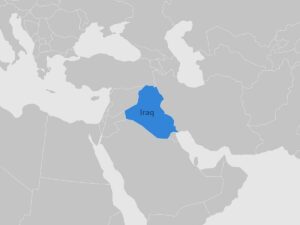















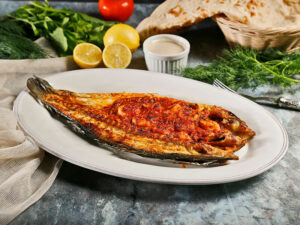
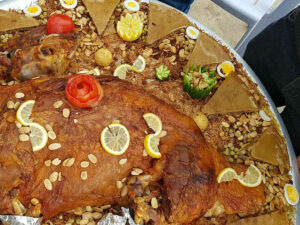
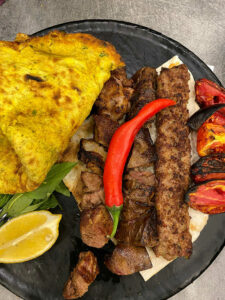
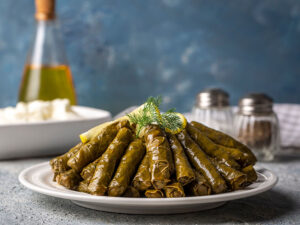
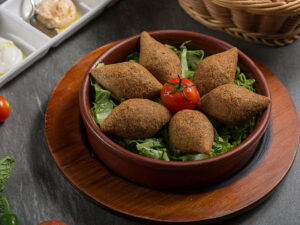
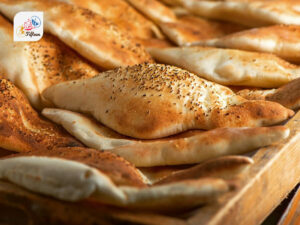
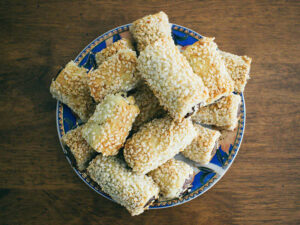
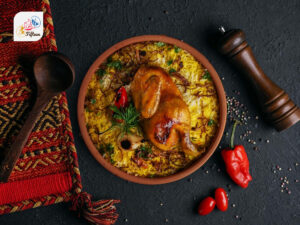
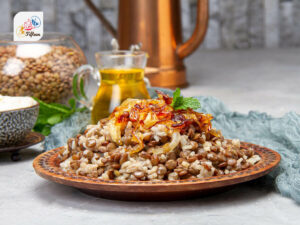
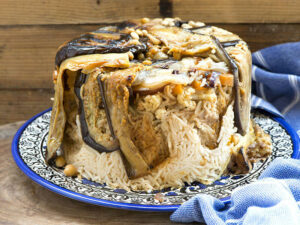
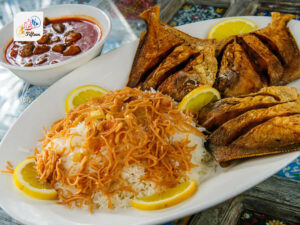
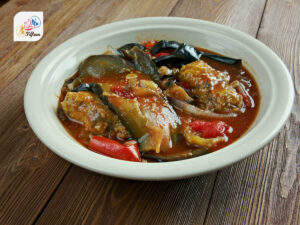
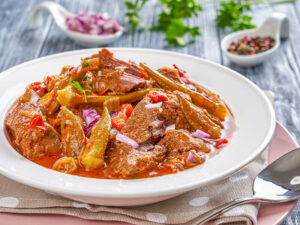
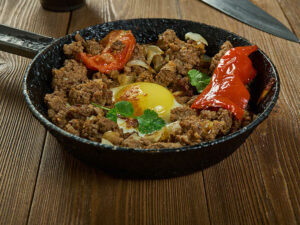
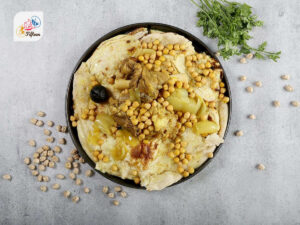
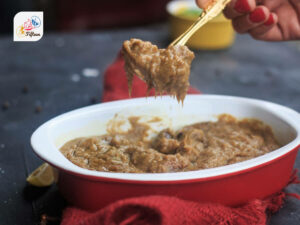
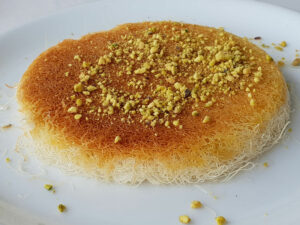
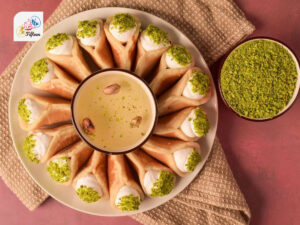
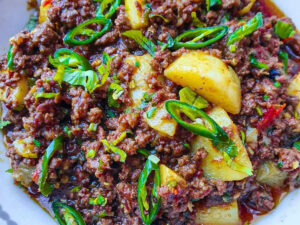
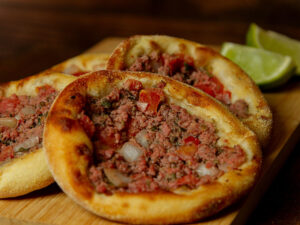
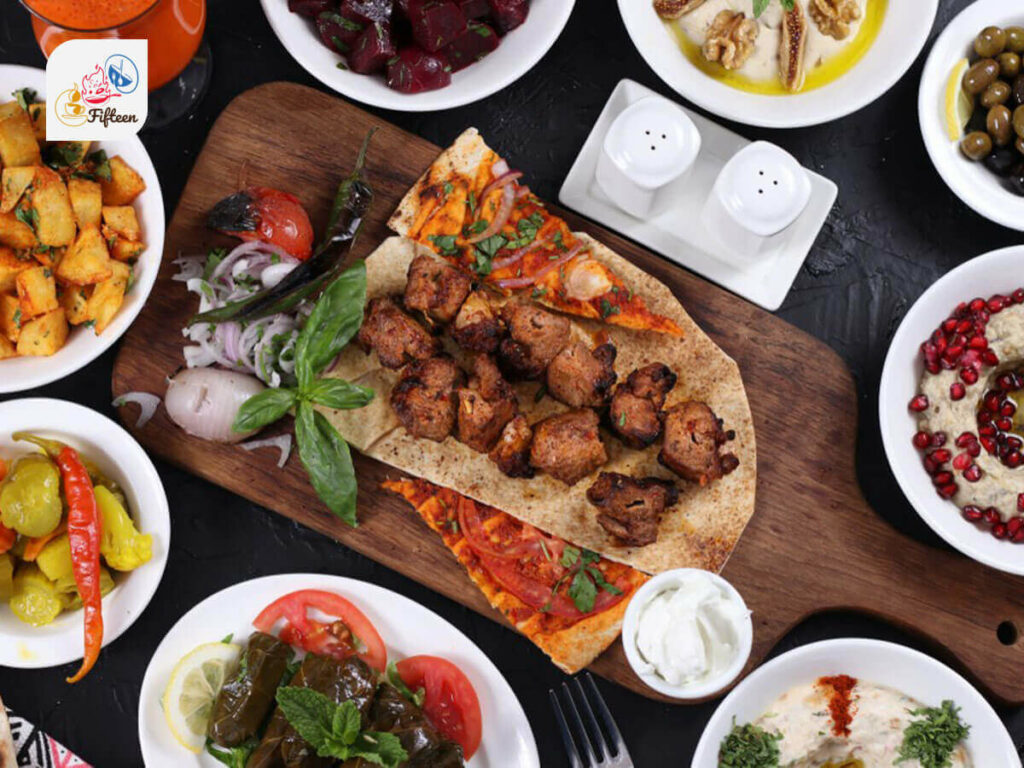
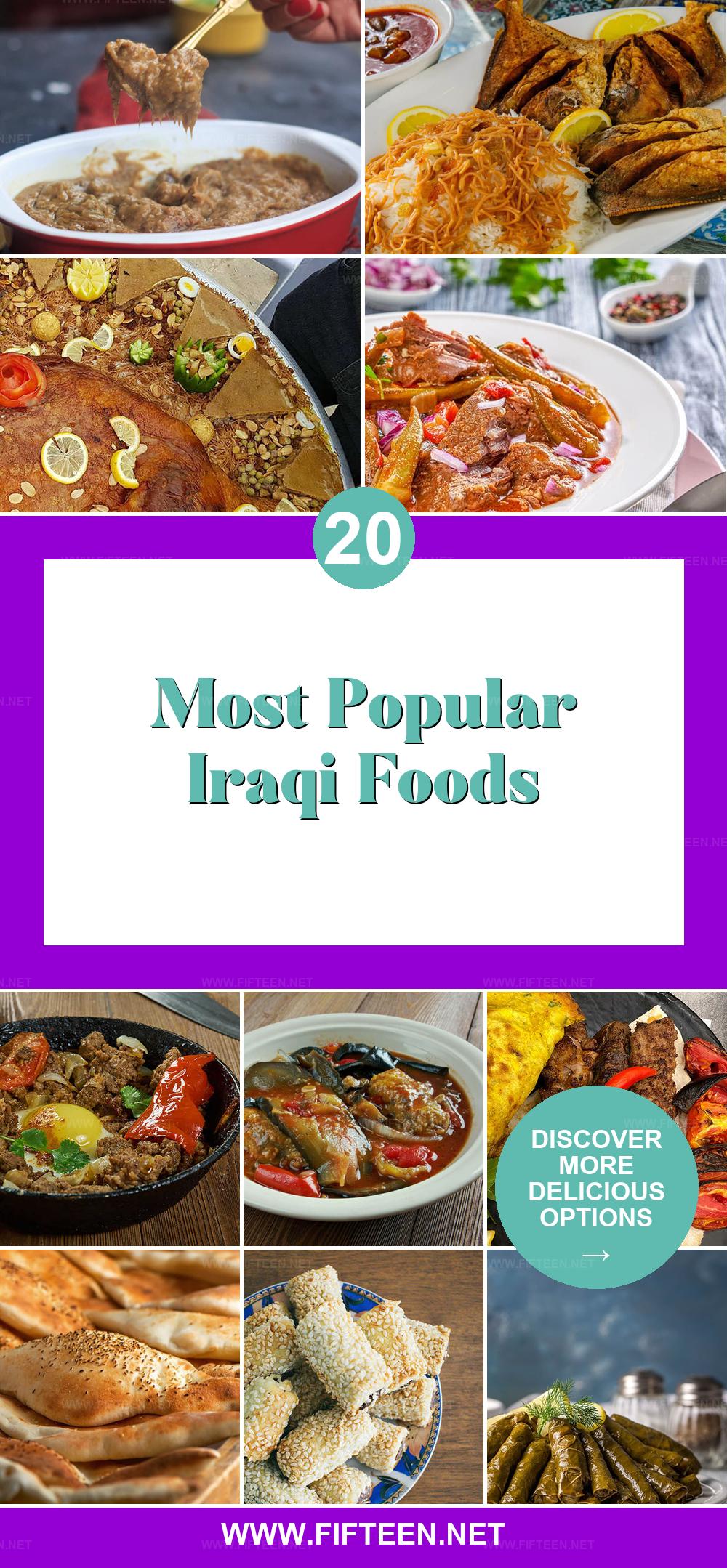
Jamie Scott
Editor in Chief, Senior Content Writer
Expertise
Home Cooking, Meal Planning, Recipe Development, Baking and Pastry, Food Editor, Cooking-video Maker, Western Food Evaluation Expert
Education
Le Cordon Bleu College of Culinary Arts
Local Community College, New York, NY
Jamie Scott is a skilled culinary expert and content creator specializing in Western cuisine. With over 15 years in the culinary field and formal training from Le Cordon Bleu, Paris, Jamie deeply understands how to blend nutrition with delicious flavors. His passion for cooking matches his commitment to making healthy eating accessible and enjoyable.
On Fifteen.net, Jamie brings a fresh perspective to classic dishes and beverages, offering readers insightful recipes, cooking tips, and a fresh view on meal planning that emphasizes taste, health, and simplicity.